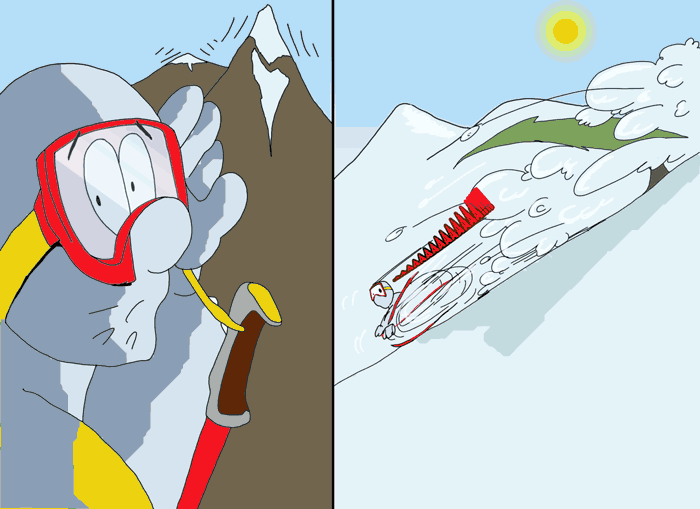Part I. Leading and Lagging Indicators

Commander in Pips: Up until now, we’ve covered a lot of important topics, different indicators and other interesting parts. Today we start with another interesting part – leading and lagging indicators. Currently a lot of educational projects and material cover this issue not quite in the proper way. So, our task here is to meet you with a classical approach to categorization of different tools into lagging and leading groups, although this approach has some misleading issues. Second, show you the way of categorization that seems to be most correct to me.
To understand the advantages and disadvantages of indicators that we’ve discussed, we will separate them into two groups – yes, “Leading” and “Lagging”. Almost like in song by Chuck Berry “Reeling & Rocking”. The most common approach to this classification points that a leading indicator gives a signal before the new trend or reversal happens. As you’ve guessed already, a lagging indicator gives a signal at some time after the new trend starting has already passed. It’s like lagging behind the trend shifting or reversal point.
Pipruit: Hm, and why we need lagging indicators at all? We can use just leading ones and always will be anticipating the market.
Commander in Pips: Oh, you’re really a smart guy. This is the best idea that I ever heard. But here is very small problem with this idea of yours…
Pipruit: What problem?

Pipruit: I guess not. We’ve studied already, that indicators have a tendency to fail from time to time, and we should not rely on any single tool.
Pipruit: Yes, I remember that.
But we also have lagging indicators, and common approach tells us supposedly that they are not so prone to bogus signals. But lagging indicators form signals, when trend shifting has happened already and price action is clearly forming a new trend. The problem with using just lagging indicators (for confidence in trend shifting) is in fact, that very often a solid move happens during the initial period of a new trend and by applying only lagging indicators you can miss a lot of profit.
So, as you can see the same problem as with short period MA – EMA seems fast but too sensitive, while long period MA is smooth but too slow.
The major approach to classification creates two groups:
1. Oscillators, i.e. leading indicators;
2. Trend following (momentum) indicators, i.e. lagging indicators.
Sometimes they could support each other; sometimes they could oppose to each other, none of them should be used exclusively, but you have to understand their snags.
So, we will start from general approach to Leading and Lagging categorization, and then we discuss our approach.
Pipruit: What “our” approach?
Commander in Pips: We think that leading indicators are those that do not need any price action to appoint on support or resistance ahead of time, while lagging indicators do.
Pipruit: And do such indicators exist at all?
Commander in Pips: Sure, but not just indicators, but “tools” also…
Pipruit: Sounds intriguing…
Comments
W
WILLIAM HUFF
12 years ago,
Registered user
Leading indicator
If anyone believes this BS about leading indicators then we can break the bank of England. There is no indicator that can definitively tell where price action will be 5 minutes from now and anyone who purports to be a bank trader should know this.
If anyone believes this BS about leading indicators then we can break the bank of England. There is no indicator that can definitively tell where price action will be 5 minutes from now and anyone who purports to be a bank trader should know this.
AsstModerator
12 years ago,
Registered user
Read the next lesson before leaping to any conclusions.
L
Leticia
12 years ago,
Registered user
Thank You!
This lesson is so timely for me, Sive. As always, I appreciate your shared knowledge and expertise. God bless!
This lesson is so timely for me, Sive. As always, I appreciate your shared knowledge and expertise. God bless!
Hamza Samiullah
6 years ago,
Registered user
Nice work..
mparama
6 years ago,
Registered user
waiting for next lesson.....thank you !
B
Borisito
6 years ago,
Registered user
Oh, good lesson!
O
One-fm
5 years ago,
Registered user
Thanks for the good work.
Table of Contents
- Introduction
- FOREX - What is it ?
- Why FOREX?
- The structure of the FOREX market
- Trading sessions
- Where does the money come from in FOREX?
- Different types of market analysis
- Chart types
- Support and Resistance
-
Candlesticks – what are they?
- Part I. Candlesticks – what are they?
- Part II. How to interpret different candlesticks?
- Part III. Simple but fundamental and important patterns
- Part IV. Single Candlestick Patterns
- Part V. Double Deuce – dual candlestick patterns
- Part VI. Triple candlestick patterns
- Part VII - Summary: Japanese Candlesticks and Patterns Sheet
-
Mysterious Fibonacci
- Part I. Mysterious Fibonacci
- Part II. Fibonacci Retracement
- Part III. Advanced talks on Fibonacci Retracement
- Part IV. Sometimes Mr. Fibonacci could fail...really
- Part V. Combination of Fibonacci levels with other lines
- Part VI. Combination of Fibonacci levels with candle patterns
- Part VII. Fibonacci Extensions
- Part VIII. Advanced view on Fibonacci Extensions
- Part IX. Using Fibonacci for placing orders
- Part X. Fibonacci Summary
-
Introduction to Moving Averages
- Part I. Introduction to Moving Averages
- Part II. Simple Moving Average
- Part III. Exponential Moving Average
- Part IV. Which one is better – EMA or SMA?
- Part V. Using Moving Averages. Displaced MA
- Part VI. Trading moving averages crossover
- Part VII. Dynamic support and resistance
- Part VIII. Summary of Moving Averages
-
Bollinger Bands
- Part I. Bollinger Bands
- Part II. Moving Average Convergence Divergence - MACD
- Part III. Parabolic SAR - Stop And Reversal
- Part IV. Stochastic
- Part V. Relative Strength Index
- Part VI. Detrended Oscillator and Momentum Indicator
- Part VII. Average Directional Move Index – ADX
- Part VIII. Indicators: Tightening All Together
- Leading and Lagging Indicators
- Basic chart patterns
- Pivot points – description and calculation
- Elliot Wave Theory
- Intro to Harmonic Patterns
- Divergence Intro
- Harmonic Approach to Recognizing a Trend Day
- Intro to Breakouts and Fakeouts
- Again about Fundamental Analysis
- Cross Pair – What the Beast is That?
- Multiple Time Frame Intro
- Market Sentiment and COT report
- Dealing with the News
- Let's Start with Carry
- Let’s Meet with Dollar Index
- Intermarket Analysis - Commodities
- Trading Plan Framework – Common Thoughts
- A Bit More About Personality
- Mechanical Trading System Intro
- Tracking Your Performance
- Risk Management Framework
- A Bit More About Leverage
- Why Do We Need Stop-Loss Orders?
- Scaling of Position
- Intramarket Correlations
- Some Talk About Brokers
- Forex Scam - Money Managers
- Graduation!